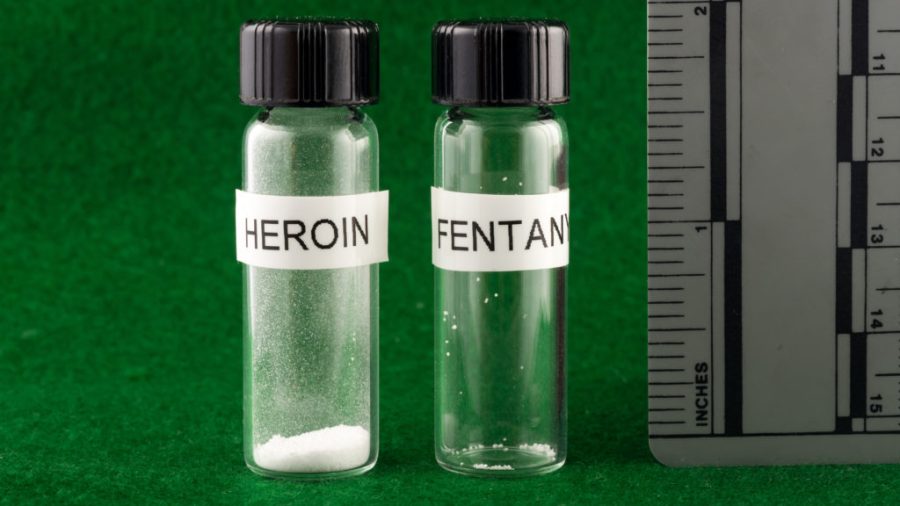Fentanyl and Its Growing Responsibility for the Next Wave of the Opioid Crisis
What fentanyl is and why it’s such a big problem
A drug called fentanyl has been a growing problem in the United States. Its prevalence is becoming extremely significant and some believe it is the largest factor causing the next wave of the opioid crisis. You may have heard of recent horrific stories involving accidental fentanyl drug overdoses but it is important to really understand what fentanyl is first.
Fentanyl is a synthetic opioid that is legally manufactured and distributed in the US. It is similar to the well known drug, morphine, but is 50 to 100 times more potent. It is a prescribed medication that is used similarly to morphine, for post-operative pain or other severe pains. It is also sometimes used for chronic pains but usually only in extreme cases when other opioids are not effective. As a prescription, fentanyl is known most commonly by the names: Actiq, Duragesic, and Sublimaze.
So how do people use fentanyl? Well, when used properly for prescription, it can be given by a doctor as a shot, a skin patch, or as lozenges that are used like cough drops. The illegally used fentanyl most responsible for overdoses is made in labs and distributed on blotting paper, as powder, put in nasal sprays, or made into pills.
One of the biggest causes of these overdoses is not that people knowingly consume fentanyl, rather it is from a process called lacing. Some drug dealers mix drugs like heroin, cocaine, methamphetamine, and MDMA with fentanyl. Fentanyl has even been found in some forms of marijuana. This is because it takes very very small amounts of fentanyl to create a significant high so it is the cheaper option to use less of a pure substance and just substitute in fentanyl. Often people take these drugs not knowing they are more addictive and sometimes they contain too much potency for someone’s body to handle.
Like heroin, morphine, and other opioids, fentanyl binds to the brain’s opioid receptors. These are within the part of the brain that controls pain and emotion. These are the usual effects of fentanyl use: extreme happiness, drowsiness, nausea, confusion, constipation, problems breathing, and unconsciousness. A person can overdose if they consume too much fentanyl which can produce adverse effects like slowed or stopped breathing. This causing hypoxia, slowed oxygen levels to the brain. Which can lead to permanent brain damage or death. Fentanyl specifically, is so potent that just being in the vicinity of the drug and its fumes can cause severe damage or death. We will talk about more examples of this later.
Naloxone is the most common medication to help stop drug overdoses. It comes as an injection solution or a nasal spray (commonly known as Narcan). The problem that is often occurring is that it is difficult to tell what drug causes the overdose because of lacing. So, the correct dosage and medication is difficult to know when dealing with an overdose. Some states have passed laws to allow non-prescription dispensing of Naloxone.
It’s important to understand the detriment of opioids and other drugs to our society. The United States alone topped 100,000 deaths annually by drug overdose. Synthetic opioids, like fentanyl, are the most common drugs used in overdoses. In 2010, only 14.3% of opioid related deaths involved fentanyl. Now, fentanyl accounts for nearly 60%. In just a decade, fentanyl’s prevalence in opioid related deaths has quadrupled. Let’s take a quick look at two examples of horrifying stories involving fentanyl.
Earlier this month, a 13 year old boy in Hartford Connecticut was rushed from school to the hospital. Two other boys were also reported to the hospital after complaining of dizziness. The first boy died two days later. All three had come in close contact with fentanyl in school that day. The school was put into a lockdown where they found 40 bags of fentanyl around the school. Yesterday, January 27th, authorities found 100 bags of fentanyl in the 13 year old boy’s room. Investigators are attempting to discover how the 13 year old obtained this amount of fentanyl. Although this is an extreme case, it is important to understand that the children were barely in contact with the drug and were hospitalized (one being killed). It is suspected that they were merely inhaling fumes of the drugs from a distance.
Another growing problem is police near-death overdoses from fentanyl. You can easily find hundreds of stories of these instances with an online Google search. There are even Youtube videos of officers coming in contact with fentanyl and overdosing. Officers in these instances, confiscate illicit substances not knowing they contain fentanyl and after briefly being exposed to the drug, can overdose. Now, I don’t support throwing these drug-users in jail for assault on a police officer, but the problem of fentanyl needs to be taken more seriously. Many of us have already been affected by the opioid epidemic and now there is an even stronger drug being widely used, and it is killing people. The terrible examples of death from fentanyl use can’t be undone, but we can work to stop more from happening.








